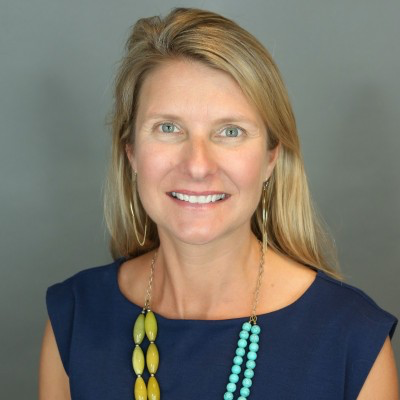Andrew explained that managing salt marshes means adjacent landowners can't arbitrarily fill in marshes for development. However, developers do apply for permits to fill in marshes for projects considered “beneficial to the community's common good,” such as road crossings, parking lots, and multi-family housing. These permits are typically for small areas, like an acre or two here and five acres there, rather than large stretches of marsh. Planning departments may hold public hearings, but these projects often move forward unopposed. Rather than being evaluated by public input or environmental impact statements that consider the ecosystem as part of the Common Green benefiting the watershed, it feels like “death by a 1,000 cuts.” That’s why citizens should participate by attending city and county hearings on planning and development projects in their communities. Organizations such as the Coastal Conservation League and the Lowcountry Land Trust, along with other NGOs, are actively working to protect South Carolina's lands and waterways.
The Amazing Charleston Water Keepers and Their Work.
Harriott Parker, Director of Development & Stewardship, noted that many volunteers attending are from the Water Watchers program. She explained that these passionate individuals commit to sampling water from their designated sites in the Ashley, Cooper, Stono, and Wando Rivers every Wednesday, from May through October. Each sample they collect is sent to the College of Charleston's Department of Geology and Environmental Geosciences laboratory, where it undergoes testing for Enterococcus levels. As soon as the results are available, they are swiftly posted on the Water Watch map on their website, providing swimmers with timely, valuable information to ensure their safety
“But that's not all!” stated Brittney Prebis, Charleston Waterkeeper's Community Science Manager. She added that the samples are also carefully analyzed for other potential contaminants and pollutants, such as plastic pellets, hydrocarbons, and pesticides. The program takes a comprehensive approach, monitoring key water quality indicators and the overall health of our habitats by documenting trends in temperature, dissolved oxygen, salinity, phytoplankton diversity, and even invasive algae species. Brittney summarized the historical data from water samples collected between 2018 and 2024. "We've noticed some trends emerge when looking back at the data from our longest-monitored sites. These trends include rising water temperatures, increasing salinity levels, and decreasing pH, indicating that our waterways are becoming more acidic. These findings are consistent with other studies and are attributable to ocean warming." We could not do this work without our incredible volunteers. In 2024, a total of 52 Creek Watchers volunteered 649 times at 50 sites, donating 756 volunteer hours – a contribution valued at over $25,000!
I listened to Andrew on a podcast, 'Conversing with Nature,' where he discussed two examples that combine scientific work and advocacy, each directly aiming to reduce pollution in our waterways. In the James Island Creek example, Water Keepers acted as community advocates. They are advocating for a clean creek and bringing everyone together to make that happen. In the second example, they successfully held a corporation accountable for its actions. He explained that these two projects combined science and law to improve the community and cut down pollution. During the podcast, he stated, "I'm most proud of our work around James Allen Creek. The testing for bacteria in James Island Creek began in 2013, and it was immediately clear that the Creek had problems with high levels of bacteria.” It quickly became evident that septic tanks were a major source of bacterial pollution. They collaborated with the Department of Environmental Services to demonstrate that the creek failed to meet water quality standards. This prompted a federal legal obligation for a cleanup plan, which provided a framework for the community. Representative Wetmore and Senator Campsen successfully secured funds in the state budget for sewer extension upgrades to the James Island PSD. Additionally, others have teamed up to obtain funding from the Rural Infrastructure Authority. As a result, there is an $8 million sewer extension project in the Clarks Point neighborhood, aimed at disconnecting residents from septic tanks in the low-lying area near the creek. This project will bring sewer lines into those communities, offering a better, more sustainable solution for the future. The second example he pointed to was from 2019, when a large number of small plastic pellets called nurdles washed up on Sullivan's Island one morning. It quickly became clear that a facility was releasing these substances. We gathered months of data and explored the marsh, collecting small pellets and measuring their density. As we approached this facility, the densities increased. We quickly identified the culprit and, with support from the Coastal Conservation League and the Southern Environmental Law Center, used the federal Clean Water Act and the Resource Conservation and Recovery Act to file a lawsuit against that company. This resulted in a $1,000,000 settlement that went to the Coastal Community Foundation and established the Healthy Harbor Fund, which now grants funds to support projects that improve the health and water quality of Charleston harbor. Thanks to Charleston Waterkeeper's tireless efforts, data from Water Watch is helping create positive change for our clean water initiatives. They actively identify pollution problems, advocate for stronger protections, and work tirelessly to improve our water quality. Our valuable waterways face many challenges, including pollution, wetland loss, and the effects of climate change. The Water Watch program encourages our community to take action and make a real difference for our environment. I encourage you to find a Waterkeeper organization near you on their interactive map at https://waterkeeper.org/findyourwaterkeeper. And if you live near Charleston, SC, check out their website at https://charlestonwaterkeeper.org.




